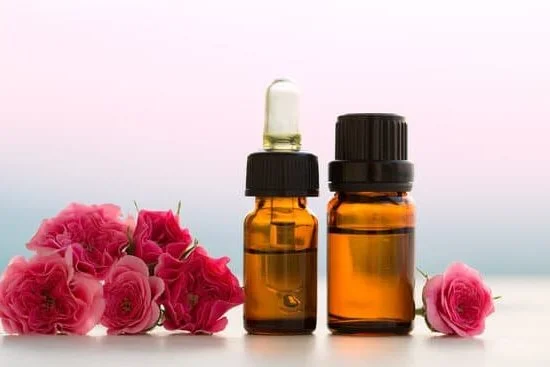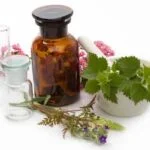Aromatherapy has long been recognized for its numerous benefits to physical and emotional well-being. From stress reduction to boosting relaxation, this ancient practice harnesses the power of essential oils to enhance our overall sense of wellness. But did you know that our skin plays a crucial role in maximizing the therapeutic effects of aromatherapy? In this article, we will explore how the skin is useful in aromatherapy and its connection to skin health.
Our skin, being the largest organ in our body, acts as a protective barrier against external factors such as environmental pollutants, toxins, and pathogens. It also serves as a gateway for absorbing beneficial substances like essential oils. Through a process called skin absorption, these potent plant extracts can penetrate into our bloodstream and deliver their therapeutic properties throughout the body.
Understanding this science behind skin absorption is key to fully harnessing the benefits of aromatherapy. By applying essential oils topically on the skin, we can target specific areas or address particular concerns effectively. This method allows for greater control over dosage and targeted treatment compared to other methods of administration like inhalation or ingestion.
In the following sections, we will delve deeper into the various benefits of topical application in aromatherapy. We will explore how it promotes healthy skin by nourishing and rejuvenating different skin types. Moreover, we will discuss techniques for safe and effective skin application including tips for dilution, patch testing, and massage.
By understanding how the skin interacts with essential oils in aromatherapy, we can unlock its full potential in achieving healthy and vibrant skin. So let’s dive into this fascinating world where science meets self-care and explore how the skin plays a crucial role in enhancing our well-being through aromatherapy.
The Science Behind Skin Absorption
In the world of aromatherapy, understanding how essential oils interact with our skin is crucial to fully harness their therapeutic benefits. The process by which essential oils penetrate and benefit the skin is a fascinating scientific phenomenon that has been studied and explored for centuries. Through this understanding, we can utilize aromatherapy as a powerful tool for promoting healthy skin and overall well-being.
The Transdermal Pathway
When it comes to skin absorption, the process occurs through what is known as the transdermal pathway. This pathway refers to the ability of certain substances, such as essential oils, to pass through the layers of the skin and enter into the bloodstream. The main factors that influence transdermal absorption include molecular size, solubility, concentration, and temperature.
Essential oils have remarkable chemical properties that allow them to easily penetrate into the deeper layers of the skin. Due to their small molecular size and lipophilic nature (which means they are attracted to fats), essential oil molecules can permeate through the top layer of the skin, known as the stratum corneum.
From there, they can travel through various layers of the dermis before eventually reaching blood vessels and circulating throughout the body. This process allows essential oils to deliver their therapeutic compounds directly to target areas within our system.
The Benefits of Topical Application
Topical application of essential oils on the skin offers numerous benefits for both our physical health and overall well-being. As essential oils penetrate into the deeper layers of our skin, they interact with cells, tissues, and nerve endings present in those areas. This interaction triggers various physiological responses that can help address specific concerns or promote general wellness.
One major benefit of topical application is its ability to promote healthy-looking skin. Many essential oils possess antimicrobial properties that can help combat bacteria and fungi on the skin’s surface, aiding in the prevention or treatment of conditions such as acne. Additionally, essential oils with anti-inflammatory properties can help reduce redness, swelling, and irritation associated with skin conditions like eczema and psoriasis.
Furthermore, topical application allows for localized treatment of specific areas of concern. Essential oils can be used to target muscle soreness, joint pain, or bruises by applying them directly to the affected area. This localized approach enhances the effectiveness of aromatherapy by delivering concentrated benefits exactly where they are needed.
Understanding how essential oils penetrate and benefit the skin is essential for maximizing their therapeutic potential. By utilizing topical application techniques in a safe and effective manner, we can unlock the power of aromatherapy for healthy and vibrant skin.
Benefits of Topical Application
Topical application of essential oils is a popular and effective way to promote healthy skin and overall well-being in aromatherapy. When applied to the skin, essential oils are absorbed into the bloodstream, where they can provide various therapeutic benefits. This section will explore the science behind how essential oils penetrate and benefit the skin, as well as the advantages of topical application for promoting skin health and overall wellness.
The science behind skin absorption lies in the structure of our skin. The outermost layer of our skin, known as the stratum corneum, acts as a barrier to prevent harmful substances from entering our bodies. However, this layer is permeable to small molecules such as those found in essential oils. When applied topically, essential oil molecules are able to penetrate the stratum corneum and enter into the deeper layers of the skin.
Once inside the body, essential oils have various effects on our physiological and psychological well-being. For example, certain essential oils have anti-inflammatory properties that can help reduce inflammation and redness caused by acne or other skin conditions. Other essential oils have antimicrobial properties that can help fight against bacteria or fungi on the skin’s surface. Additionally, many essential oils have calming or uplifting effects on our mood, which can contribute to an overall sense of well-being.
Topical application also allows for targeted treatment of specific areas or concerns on the skin. Whether it be dryness, aging signs, or hyperpigmentation, applying essential oils directly to these areas can provide concentrated benefits. Moreover, incorporating a regular skincare routine with aromatherapy can enhance not only physical but also mental health by creating a self-care ritual that promotes relaxation and stress relief.
Different Skin Types and Essential Oils
When it comes to aromatherapy, understanding your skin type is essential in order to choose the right essential oils that will address your specific skin concerns. Different skin types have distinct characteristics, such as oiliness, dryness, sensitivity, or combination skin. By identifying your skin type and its unique needs, you can select the appropriate essential oils that will effectively nourish and support your skin.
Oily Skin
If you have oily skin, you may be prone to excessive sebum production and enlarged pores. Essential oils that are beneficial for oily skin include tea tree oil, lavender oil, clary sage oil, and geranium oil. Tea tree oil has natural antiseptic properties that can help control excess oil production and combat acne-causing bacteria.
Lavender oil has a balancing effect on the skin’s sebum production, which can reduce the appearance of shiny or greasy skin. Clary sage oil regulates oil production while promoting healthy-looking skin. Geranium oil helps tighten pores and balance sebum production.
Dry Skin
Dry skin often lacks moisture and may feel tight or flaky. It requires essential oils that provide hydration and nourishment. Essential oils like rosehip seed oil, chamomile oil, sandalwood oil, and neroli oil work well for dry skin types. Rosehip seed oil is rich in vitamins A and C, which promote cell regeneration and moisturize the skin.
Chamomile oil has soothing properties that relieve dryness and inflammation. Sandalwood oil moisturizes deeply while offering a calming aroma. Neroli oil rejuvenates dry skin by stimulating cell growth and improving elasticity.
Combination Skin
Combination skin is characterized by an oily T-zone (forehead, nose, chin) and normal to dry cheeks. To address this skin type, essential oils with balancing properties are ideal. Some recommended essential oils for combination skin include bergamot oil, ylang-ylang oil, frankincense oil, and patchouli oil. Bergamot oil helps regulate sebum production and minimize the appearance of pores.
Ylang-ylang oil balances both oily and dry areas while promoting healthy-looking skin. Frankincense oil has a soothing effect on the skin and promotes cell regeneration. Patchouli oil balances oiliness while hydrating dry patches.
By choosing the right essential oils for your specific skin type, you can maximize the benefits of aromatherapy for your skin’s health. Additionally, it is important to remember that everyone’s skin is unique, so it may be necessary to experiment with different combinations of essential oils to find what works best for you.
Techniques for Safe and Effective Skin Application
One of the key aspects of using essential oils in aromatherapy is ensuring safe and effective application on the skin. This involves techniques such as dilution, patch testing, and massage to maximize the benefits while minimizing any potential risks or adverse reactions.
Dilution
Dilution refers to the process of mixing essential oils with a carrier oil before applying them directly to the skin. This is important because undiluted essential oils can be too strong and may cause skin irritation or sensitization. The specific dilution ratio will depend on factors such as the individual’s age, overall health, and the intended use of the essential oil.
Generally, a safe dilution ratio for most adults is 2-3 drops of essential oil per teaspoon (5ml) of carrier oil. For children and individuals with sensitive skin, it is recommended to use even lower dilutions.
Patch Testing
Patch testing is a crucial step in preventing allergic reactions or sensitivities to essential oils. Before applying an essential oil to a larger area of skin, it is recommended to perform a patch test on a small area first. To do this, mix 1-2 drops of diluted essential oil with a small amount of carrier oil and apply it to an inconspicuous area like the inner forearm.
Leave it on for 24 hours and check for any signs of redness, itching, or inflammation. If no reaction occurs, it is generally safe to proceed with using that particular essential oil.
Massage
Massage is an effective way to enhance absorption of essential oils into the skin while providing relaxation and stress relief. When applying essential oils through massage, always ensure proper dilution by mixing them with a carrier oil first. Choose a carrier oil that suits your skin type and needs-examples include coconut oil for moisturizing dry skin or jojoba oil for balancing oily skin.
Use gentle, circular motions to massage the diluted essential oil mixture onto the skin. Pay attention to any areas of tension or discomfort. Remember to always check for any adverse reactions during and after the massage.
By following these techniques for safe and effective skin application, you can experience the full benefits of aromatherapy while minimizing any potential risks. Dilution, patch testing, and massage are essential steps in ensuring that your skin receives the nourishment and therapeutic effects of essential oils in a safe and enjoyable way.
Addressing Skin Conditions and Concerns With Aromatherapy
Aromatherapy can be a beneficial approach for addressing various skin conditions and concerns, including acne, eczema, psoriasis, and more. These conditions not only affect the physical appearance of the skin but can also have a significant impact on an individual’s overall well-being. By understanding how essential oils can be used to alleviate these concerns, individuals can find relief and promote healthy skin.
One common skin condition that aromatherapy can help address is acne. Essential oils such as tea tree oil, lavender oil, and clary sage oil have antimicrobial properties that help combat acne-causing bacteria. Additionally, they can help regulate sebum production and reduce inflammation associated with acne breakouts. Incorporating these essential oils into skincare routines through dilution in carrier oils or adding them to facial cleansers or toners can effectively treat and prevent acne.
Eczema is another condition that can greatly benefit from aromatherapy. Essential oils like chamomile oil and lavender oil possess soothing properties that can relieve itching and inflammation commonly experienced with eczema flare-ups. These oils can be added to bath water or blended with carrier oils for massage to provide nourishment and hydration to dry and irritated skin.
Psoriasis, a chronic autoimmune condition characterized by red patches of thickened skin topped with silvery scales, can also be managed effectively with aromatherapy. Some essential oils like bergamot oil and frankincense oil have anti-inflammatory properties that reduce redness and irritation associated with psoriasis. Incorporating these oils into daily skincare routines or using them during massages can provide much-needed relief for individuals dealing with this condition.
Enhancing Aromatherapy With Carrier Oils
Carrier oils play a crucial role in enhancing the effectiveness of aromatherapy by aiding in skin nourishment and absorption. These oils are usually derived from nuts, seeds, or vegetables, and they serve as a base for diluting essential oils before topical application. While essential oils are volatile and can sometimes be too potent to apply directly on the skin, carrier oils provide a gentle and safe way to deliver the therapeutic benefits of aromatherapy.
One major benefit of using carrier oils is their ability to moisturize and hydrate the skin. They contain fatty acids that help improve the skin’s barrier function, preventing moisture loss and keeping the skin soft and supple. Carrier oils like jojoba oil, almond oil, and coconut oil are rich in nutrients that promote healthy skin, such as vitamins E and A. These vitamins help protect the skin from environmental damage, reduce inflammation, and support cell regeneration.
In addition to moisturizing properties, carrier oils also aid in the absorption of essential oils into the skin. Essential oils are highly concentrated plant extracts that can be challenging for the skin to absorb on their own.
By mixing them with carrier oils, they become diluted and easier for the skin to absorb. The fatty acids present in carrier oils create a lipid barrier on the skin’s surface, allowing essential oil molecules to penetrate deeper into the layers of the skin where they can exert their therapeutic effects.
When using carrier oils in aromatherapy skincare routines, it is important to choose one that suits your particular skin type. Some carrier oils are more suitable for dry or mature skin due to their richer texture, while others are better suited for oily or acne-prone skin due to their lightweight consistency. Understanding your specific needs will help you select a carrier oil that complements your skincare goals.
Some Popular Carrier Oil Options Include
- Sweet almond oil
- Jojoba oil
- Coconut oil
- Grapeseed oil
- Argan oil
- Avocado oil
Remember to always perform a patch test before applying any carrier oil or essential oil blend to your skin. This will help ensure that you do not have an allergic reaction or sensitivity to the oils. Additionally, when using carrier oils, it is important to use them in the correct proportion with essential oils. Generally, a safe dilution ratio for most adults is 2-3 drops of essential oil per teaspoon of carrier oil.
By incorporating carrier oils into your aromatherapy skincare routine, you can maximize the benefits of essential oils while nourishing and hydrating your skin. Whether you are looking to address specific skin concerns or simply enhance your overall well-being, understanding the role of carrier oils in aromatherapy is key to achieving healthy and vibrant skin.
Creating Personalized Aromatherapy Skincare
One way to personalize aromatherapy skincare is by creating homemade facial cleansers. These cleansers can be customized by selecting essential oils that target specific skin concerns, such as lavender for calming irritated skin or tea tree oil for acne-prone skin. To make a simple DIY facial cleanser, mix a carrier oil like jojoba or sweet almond oil with a few drops of the chosen essential oil. Gently massage the mixture onto damp skin and rinse with warm water.
Another popular DIY recipe for personalized aromatherapy skincare is making face masks. Face masks can help address various skin concerns like dryness, excess oil production, or dullness. For a hydrating face mask, combine mashed avocado with a tablespoon of raw honey and five drops of rosehip oil. Apply the mask onto clean skin and leave it on for 15 minutes before rinsing off with lukewarm water.
Tips and tricks can also enhance personalized aromatherapy skincare routines. One tip is to create customized body lotions by adding essential oils to an unscented lotion base. This allows individuals to boost their favorite lotion with the benefits of different essential oils depending on their needs at that time. Additionally, using essential oils in baths and showers can provide a luxurious and therapeutic experience while nourishing the skin.
Creating personalized aromatherapy skincare products through DIY recipes offers a unique opportunity to explore the benefits of essential oils specifically tailored to individual needs. By following these tips and tricks, individuals can take charge of their skincare routine while enjoying the therapeutic properties of essential oils for healthy and radiant skin.
| DIY Recipes | Tips and Tricks |
|---|---|
| Aromatherapy Facial Cleanser (carrier oil + essential oil) | Create customized body lotions with essential oils |
| Hydrating Avocado Face Mask (avocado + raw honey + rosehip oil) | Add essential oils to baths or showers for a luxurious experience |
Precautions and Contraindications
When utilizing essential oils for skincare, it is crucial to understand the potential risks and contraindications associated with their use. While essential oils are generally safe when used correctly, improper usage can lead to adverse effects on the skin. Here are some important precautions to keep in mind before incorporating essential oils into your skincare routine.
Firstly, it is essential to note that not all essential oils are suitable for direct application to the skin. Some oils can cause skin irritation, sensitization, or even allergic reactions. It is crucial to always perform a patch test before using any new essential oil on your skin.
Apply a small amount of diluted oil to a small area of your skin (such as the inner forearm) and observe for any signs of redness, itching, or irritation over the next 24-48 hours. If any adverse reactions occur, refrain from using that particular oil.
Furthermore, certain essential oils may be phototoxic, meaning they can increase sensitivity to sunlight and cause severe burns or skin pigmentation changes if applied before sun exposure. These phototoxic oils include citrus oils such as lemon, lime, orange, and bergamot. To prevent this reaction, it is recommended to avoid direct sunlight or UV exposure for at least 12 hours after applying these oils topically.
In addition to these precautions, it is crucial to properly dilute essential oils before applying them to the skin. Most essential oils should be diluted with a carrier oil (such as jojoba oil or coconut oil) before use. This helps reduce the risk of irritation and ensures proper absorption into the skin.
A general guideline for dilution is 1-2 drops of essential oil per teaspoon of carrier oil for adults. However, the dilution ratio may vary depending on individual sensitivity and the specific purpose of use.
It is also important to be cautious when using essential oils on certain populations, such as children, pregnant women, and individuals with specific medical conditions. Some essential oils are not recommended for use during pregnancy or can be unsafe for children due to their potency. It is always advisable to consult a qualified aromatherapist or healthcare professional before using essential oils if you fall into one of these categories.
By understanding and following these precautions and contraindications, you can safely harness the benefits of aromatherapy for your skin health. Remember to prioritize safety and listen to your body’s response when incorporating essential oils into your skincare routine. With proper usage, essential oils can be a valuable tool in promoting healthy and vibrant skin.
Conclusion
In conclusion, harnessing the power of aromatherapy can greatly benefit the health and appearance of the skin. The science behind skin absorption explains how essential oils can penetrate the skin and provide numerous benefits. By applying essential oils topically, individuals can promote healthy skin and overall well-being.
It is important to consider different skin types when using essential oils for skincare. Matching the right oil to your specific skin needs can help address concerns and improve overall skin health. Techniques such as dilution, patch testing, and massage should be used for safe and effective application of essential oils on the skin.
Aromatherapy can also be used to address specific skin conditions such as acne, eczema, psoriasis, and more. Understanding the role of carrier oils in nourishing and enhancing absorption can further enhance the effects of aromatherapy on the skin.
Creating personalized aromatherapy skincare routines through DIY recipes and incorporating tips and tricks can provide a customized approach to skincare. However, it is important to take precautions and understand any contraindications or risks associated with essential oil usage for skincare.
By harnessing the power of aromatherapy, individuals can experience healthy and vibrant skin. The connection between aromatherapy and skin health is a fascinating field that continues to be explored. With proper knowledge, techniques, and precautions, aromatherapy can become an integral part of skincare routines for those seeking natural options for maintaining beautiful and radiant skin.
Frequently Asked Questions
How Does Aromatherapy Work on the Skin?
Aromatherapy works on the skin through the process of absorption. When essential oils are applied topically, they can penetrate the skin and enter the bloodstream, allowing their therapeutic properties to be absorbed by the body. The molecules in essential oils are small enough to pass through the skin’s barrier and interact with the underlying tissues and cells.
This direct contact with the skin can help address various skin concerns such as dryness, inflammation, acne, aging, and many more. Additionally, certain essential oils have antimicrobial properties that can help fight off bacteria on the skin and promote overall skin health.
What Are the Benefits of Essential Oils on the Skin?
Essential oils offer numerous benefits for the skin due to their natural properties. Many essential oils possess antibacterial, antifungal, anti-inflammatory, or antioxidant properties, which can all contribute to healthier-looking skin. For example, tea tree oil is well-known for its antibacterial and acne-fighting abilities, making it a popular choice for those with oily or blemish-prone skin.
Lavender oil has soothing properties that can calm irritated skin and reduce redness. Rosehip oil is rich in antioxidants and vitamins A and C, which can help improve skin tone and texture while reducing signs of aging.
What Are the Skin Benefits of a Diffuser?
Using a diffuser with essential oils can provide multiple benefits for the skin. When aromatic molecules from essential oils are diffused into the air, they become airborne particles that we inhale during respiration. These tiny particles can have both physiological and psychological effects on our bodies when inhaled.
In terms of skincare benefits specifically, using a diffuser with essential oils like lavender or chamomile can promote relaxation and stress reduction. Reducing stress levels is beneficial for overall skin health since high levels of stress hormones like cortisol are known to worsen various dermatological conditions such as acne or eczema. Additionally, breathing in certain essential oils may help purify indoor air quality by eliminating harmful bacteria or mold spores, which indirectly contributes to maintaining healthy skin.

Are you looking for a natural way to improve your health and wellbeing?
If so, aromatherapy may be the answer for you.






